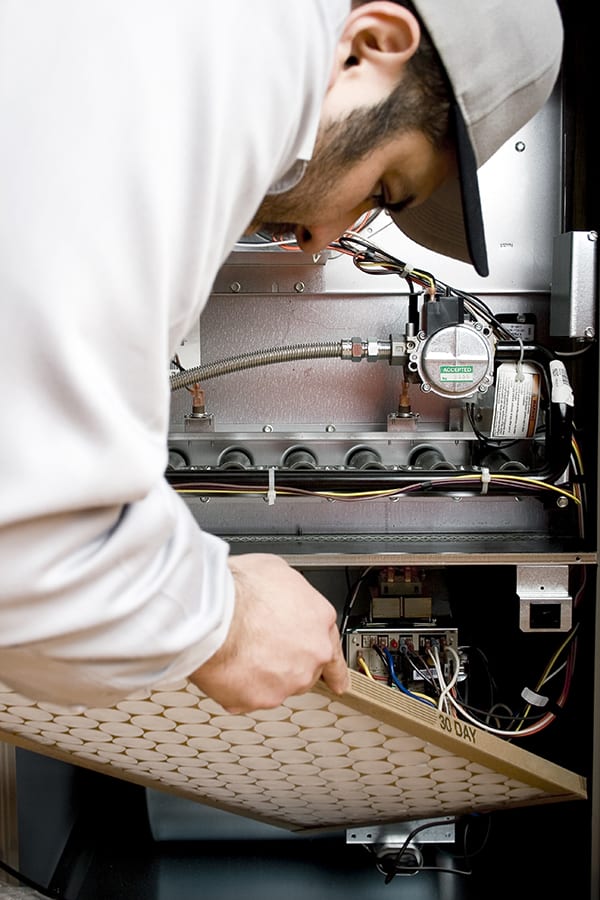Before the colder months arrive, it’s always a good idea to have your furnace inspected for its overall condition as well as for issues that could potentially cause it to break down or perform poorly right when you need them to function well the most.
It’s always a good idea to call in the professionals when, admittedly, you know very little about what your gas, electric or oil furnace is composed of and what signs it would be exhibiting if it were damaged or if a component had broken down. Your trusted heating, ventilation and air conditioning company would be able to pinpoint the problem and employ the appropriate furnace repair measures to get the equipment up and running again, just in time for the cool weather.
However, there are some simple maintenance tasks that you can perform on your own, like changing furnace filters so that your furnace will run as efficiently as before.
Filters are included in different forced-air cooling and heating systems to prevent airborne particles from reaching and damaging the blower motor of the furnace. This helps homeowners enjoy clean air. However, over time, the filter becomes dirty and clogged, and this means not only that your furnace will work harder, but also that your household may be exposed to dirty, dusty air which is unsafe and unhealthy.
To guide you in performing this filter changing task, provided below are the key things you need to complete:
1. Consult your furnace’s manual for the location of the filter and the procedure for removing it. Often, all you need to do is slide the filter out.
2. Figure out what kind of filter your furnace uses. Some will have filters that have cardboard frames — these are disposable filters. Others will have filters with plastic frames, which are reusable. You need to know this before you got out and buy new filters.
3. Turn off the furnace, and shut off the fuse box switch, or the circuit breaker, or the furnace cutoff switch (do this first regardless of whether the filter is disposable or reusable).
4. To change a disposable filter:
The first step is to remove the filter from its housing. You may find this inside the furnace or the return air vent. On the filter, you’ll find a marking that indicates the direction of airflow (it should be toward the furnace). Make this same marking on a flat surface close to the filter housing that is highly visible; you can use a permanent marker for this. It will help remind you of the right way to install the filter when it comes time to change it again.
Next, take note of the size of the filter, printed on the cardboard frame. Write it down for safekeeping so you’ll know what to ask for when you visit a hardware store, your HVAC supplier, or a home supply center.
 Put in the new filter by sliding it into place (be mindful of the side of the filter that should face the furnace), and then putting back any covers that go over it.
Put in the new filter by sliding it into place (be mindful of the side of the filter that should face the furnace), and then putting back any covers that go over it.
5. To change a reusable filter:
Remove the filter (in older furnace models, it would be found inside the return air vent, while in newer models, it may be inside the furnace).
Run a regular vacuum or a wet/dry vacuum over the filter to remove large clumps of dust, and don’t forget to vacuum the areas around the furnace, too.
Take the filter outdoors or any suitable place for hosing down and washing the dirty filter. Make sure the filter is completely dry before sliding it back inside the furnace.
With a new or freshly cleaned filter in your furnace, you can help prolong the life of your furnace and enjoy clean air in your home for a longer period. Remember to inspect the filter at least once a month and change or clean it every three months.




